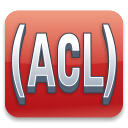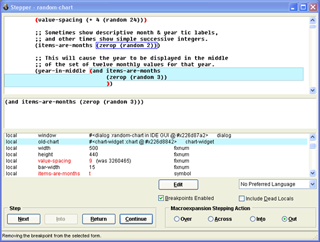Allegro CL 11.0
The Ultimate Neuro-Symbolic AI Programming Platform
Allegro CL ®
the most powerful Symbolic AI development
system available today offers a perfect match with LLMs for fact-based
enterprise-wide, AI application development.
The power of Symbolic AI with LLMs, required by fields ranging from
Life Sciences to Manufacturing to Financial Analytics, is delivered by
Franz's complete AI technology stack, which also satisfies the need
for Retrieval Augmented Generation (RAG).
Allegro CL 11.0 is the most effective system for
developing and deploying Neuro-symbolic applications to extend AI in
the real world.
 For more
information, contact [email protected].
For more
information, contact [email protected].
- Combination of classic AI symbolic reasoning + Large Language Models + Graphs.
- Plug-in AllegroGraph for seamless Semantic Knowledge Graph capabilities,
- Use Lisp or Prolog to write rules for symbolic reasoning with or without AllegroGraph.
- Extract structured and unstructured information from LLMs and store in AllegroGraph.
- Perform fast, accurate, and intelligent text retrieval and query answering with the built in Vector Database.
"Franz has further advanced its industrial-strength Common Lisp platform with the release of Allegro CL 11. Impressive ARM support on both Mac and Linux means switching architectures is painless. Internally, hashtables and sorting are measurably improved. ACL 11 is a great platform for development professionals"
Jason Cornez CTO, RavenPack International
"Common Lisp remains one of the best languages for Artificial Intelligence applications, its flexibility enables rapid experimentation and deployment. Today's Lisp compilers are robust and flexible allowing development entirely within Lisp or in combination with other languages. For example, our CyclePad system for helping engineering students learn thermodynamics is written entirely in Allegro CL. Similarly, our sketch understanding system, CogSketch, which is a novel platform for both cognitive science research and education is primarily written in Allegro CL with two modules in C."
Ken Forbus - Walter P. Murphy Professor of Computer Science at Northwestern University
"For several years now, Triton has been harnessing the extraordinary power and flexibility of Common Lisp, and more specifically the Allegro CL platform, to research and rapidly develop cutting-edge approaches for the implementation of advanced embedded AI prototypes. With Allegro CL 11 this superbly integrated development platform continues to evolve with many powerful and handy new capabilities. Panos Lekkas, VP - AI Systems, at Triton Systems, Inc."
Panos Lekkas, VP - AI Systems, at Triton Systems, Inc.
Enhancements
|
See the Release Notes for a complete description of new features and enhancements. New Features in 11.0
|
Overview
| Connectivity Tools | Database Tools | Deployment Tools | GUI Tools |
| IDE | Prolog | Tuning Tools | Web Server |
Powered by Common Lisp, Allegro CL's true dynamic object technology allows developers to generate leading edge, mission-critical applications that are robust, extensible, and easy to evolve and deploy.
| Copyright © Franz Inc., All Rights Reserved | Privacy Statement | 
|

|

|

|

|









